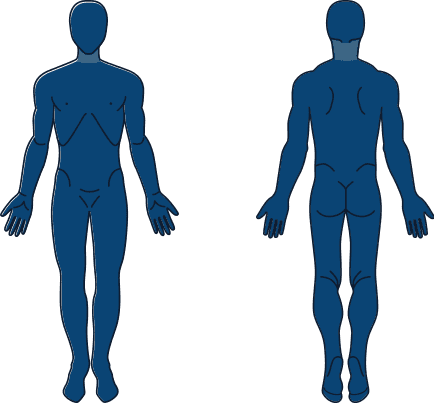What is an elbow sprain?
- An elbow sprain is a stretching of one or more of the ligaments that support the bones in the elbow.
- Sprains are graded on the amount of damage to the ligaments.
What are some of the typical causes of an elbow sprain injury?
- Landing on an outstretched arm, falls, blows to the arm, and twisting of the arm can all cause elbow sprains.
What are the symptoms of an elbow sprain Injury?
- Pain, swelling, and difficulty using and moving the arm are possible symptoms.
What are some initial treatments?
- Rest, Ice, anti-inflammatories may be helpful.
What is a forearm fracture?
- There are two bones that make up the forearm – the radius and the ulna. The radius is on the thumb side of the forearm and the ulna is on the pinkie side.
- A forearm fracture is a break in either or both of those bones away from the elbow or wrist.
What are some of the typical causes of a forearm fracture?
- A forearm fracture is typically caused by trauma to the arm.
What are the symptoms of a forearm fracture?
- Pain and swelling at the sight of injury.
- Inability to move or use the affected arm.
What are some initial treatments?
- Forearm fractures require a healthcare professional evaluation.
- Initial treatments include not using the arm and protecting it with a sling or other immobilizer if available.
- X-rays will need to be taken to determine the exact treatment.
What is lateral epicondylitis (tennis elbow)?
- The lateral epicondyle is the bony bump on the outside of the elbow when the hand is in the thumbs up position.
- There are several muscles in the forearm that attach to this bump.
- Lateral epicondylitis is an inflammation or irritation and sometimes small tears of the tendons of the muscles that attach to the lateral epicondyle.
What are some of the typical causes of lateral epicondylitis (tennis elbow)?
- Lateral epicondylitis is typically the result of repetitive use of the muscles of the forearm that help straighten the elbow and turn the wrist palm side up.
- Lateral epicondylitis can also be caused by trauma.
What are the symptoms of lateral epicondylitis?
- Pain on the outside part of the forearm.
- Pain when rotating or bending the wrist.
What are some initial treatments?
- Rest, Ice, anti-inflammatories, orthotic devices, specific physical therapy exercises.
What is medial epicondylitis (golfer’s elbow)?
- The medial epicondyle is the bony bump on the inside of the elbow when the hand is in the thumbs up position.
- There are several muscles in the forearm that attach to this bump.
- Medial epicondylitis is an inflammation or irritation and sometimes small tears of the tendons of the muscles that attach to the medial epicondyle.
What are some of the typical causes of medial epicondylitis (golfer’s elbow)?
- Medial epicondylitis is typically the result of repetitive use of the muscles of the forearm that help bend the elbow and turn the wrist palm side down.
- Medial epicondylitis can also be caused by trauma.
What are the symptoms of medial epicondylitis (golfer’s elbow)?
- Pain on the inside part of the forearm.
- Pain when rotating or bending the wrist.
What are some initial treatments?
- Rest, Ice, anti-inflammatories, orthotic devices, specific physical therapy exercises.
What is an ulnar collateral ligament Injury of the elbow?
- In the elbow, the ulnar collateral ligament connects the upper arm bone to one of the forearm bones on the side closest to the body with the palm facing upward.
- This ligament can be sprained or torn suddenly with trauma or with repetitive forceful use of the arm as in throwing sports.
What are some of the typical causes of ulnar collateral ligament injury?
- The most common cause is repetitive forceful throwing.
- This ligament can also be injured suddenly by falling on the arm or an elbow dislocation.
What are the symptoms of ulnar collateral ligament Injury?
- Grade 1 – pain at the elbow at the side closest to the body with the palm facing up.
- Grade 2 – pain in same location as grade 1, there may be looseness in the elbow joint.
- Grade 3 – pain in same location as grade 1 & 2, completely unstable elbow joint.
- Swelling, numbness, or tingling may be present with any grade.
What are some initial treatments?
- Rest, Ice, anti-inflammatories may be helpful.
- This is a condition that should be evaluated by a healthcare professional.
